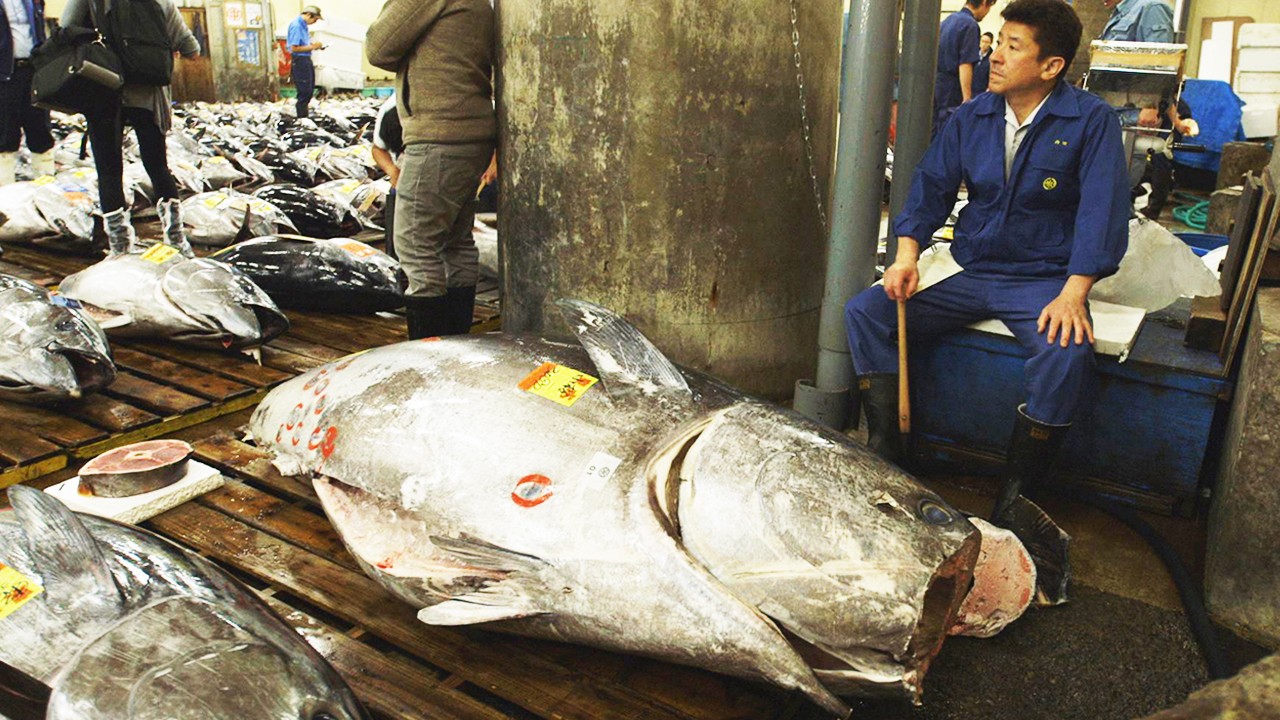A juvenile Atlantic bluefin tuna. Credit: Spanish Institute of Oceanography
This tank in the new facility at the Centro Oceanografico de Murcia holds about 100 one-year-old Atlantic bluefin tuna. Credit: Mark Mann

Mature Atlantic bluefin tuna that have reached spawning age, in a cage in the Mediterranean. Credit: Spanish Institute of Oceanography
Atlantic bluefin tuna eggs. Credit: Spanish Institute of Oceanography
At the Murcia Center, IEO scientists grow algae to feed the zooplankton that will in turn feed bluefin larvae. Credit: Mark Mann
Chef Paco Garcia helps me finish a wild Atlantic bluefin tuna steak worth 60 euros at his upscale Madrid restaurant Ponzano. Credit: Mark Mann
